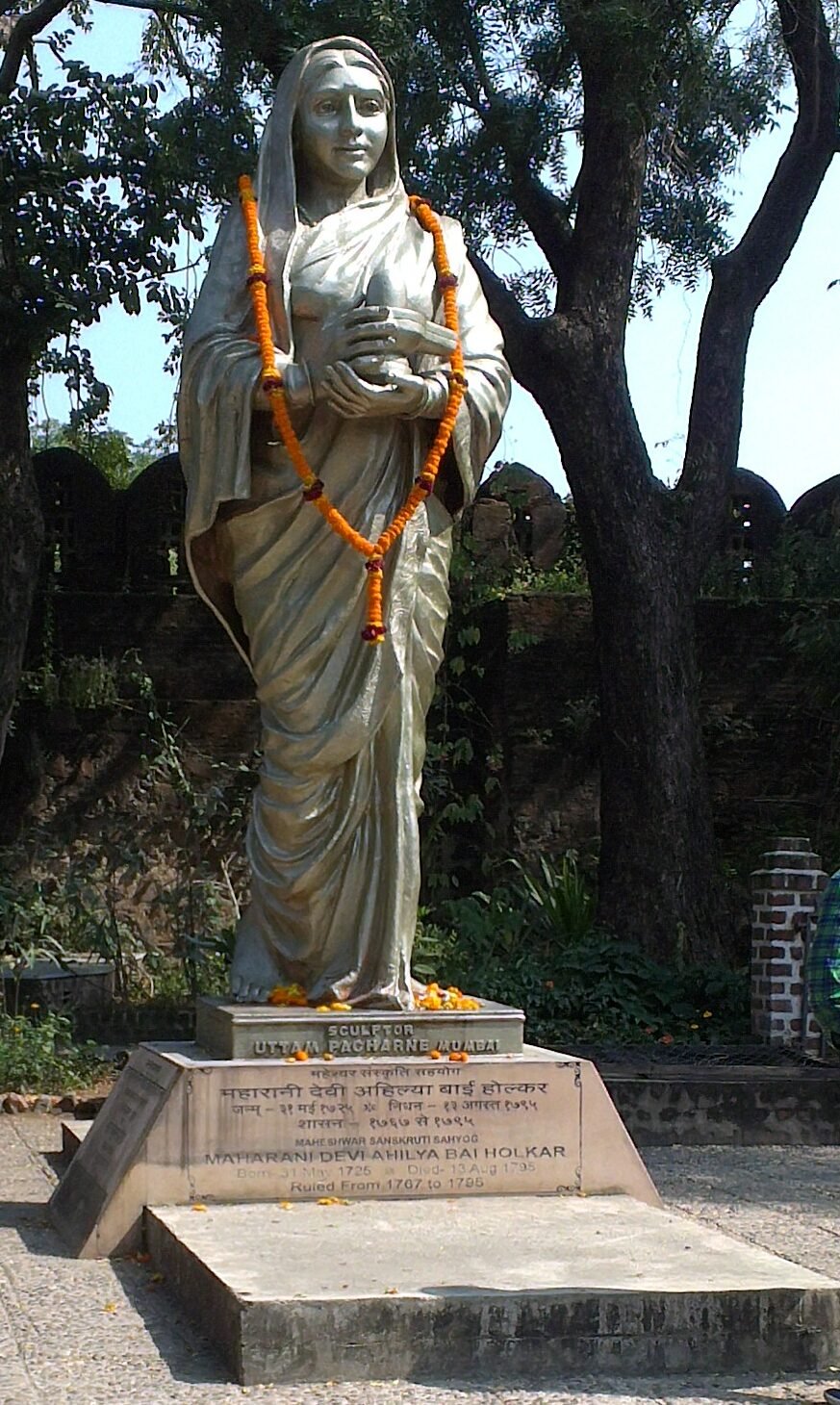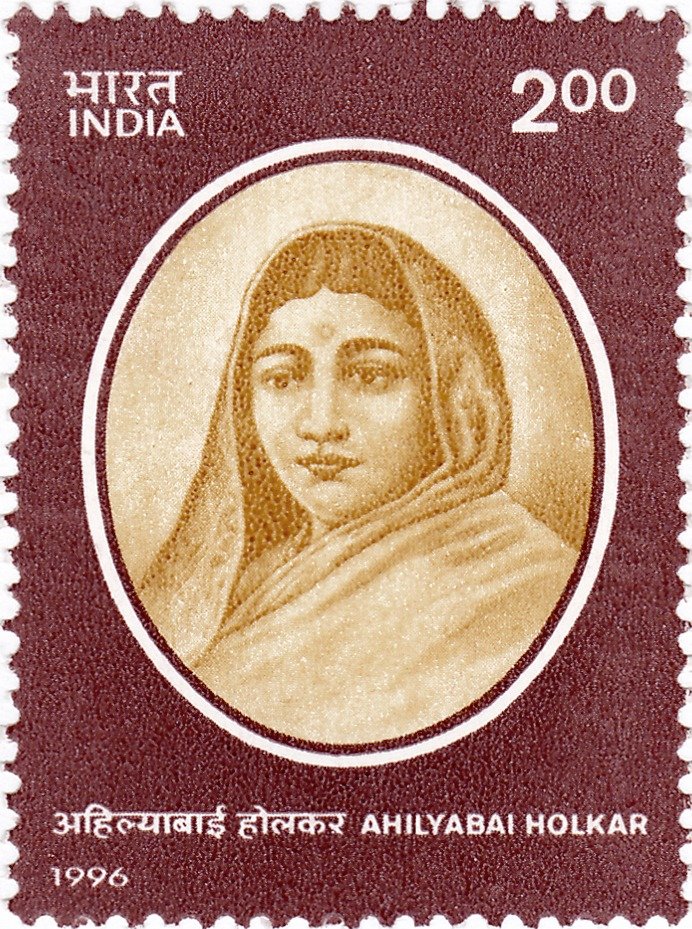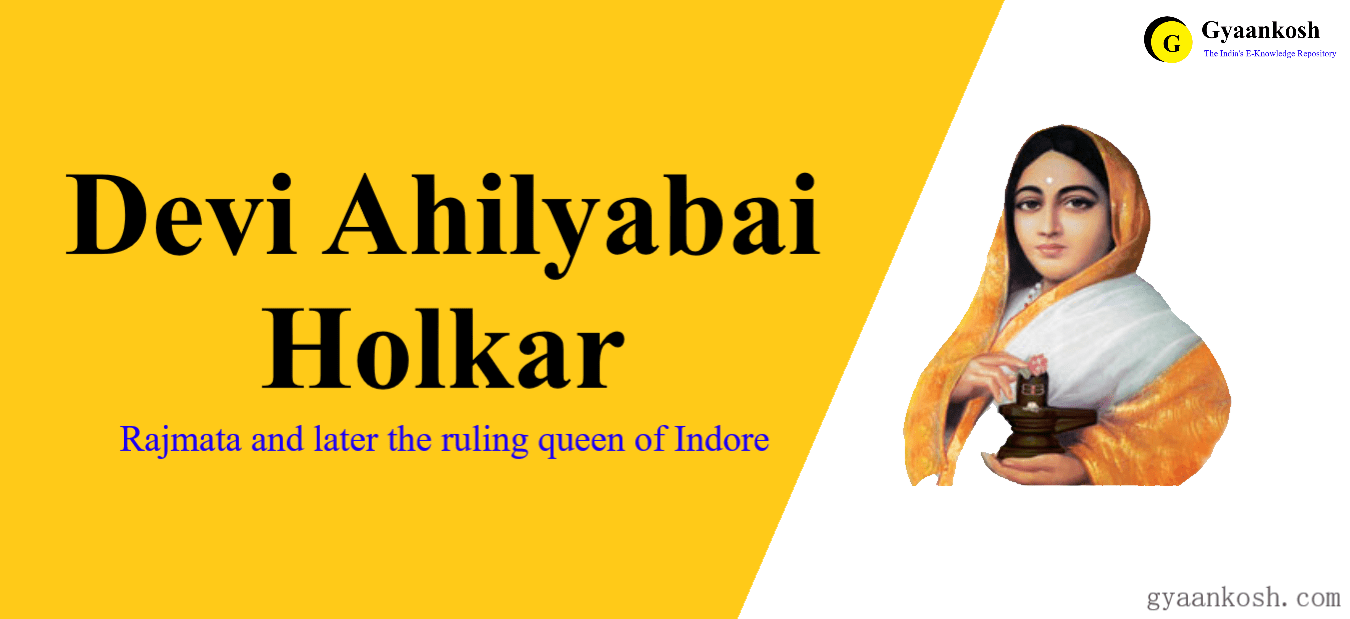In Indian tradition, the term Devi is used not only to signify a ‘shining lady’ but also denotes divinity. Devi Ahilyabai Holkar was the Rajmata and later the ruling queen of Indore which comes under Maratha Empire.
About Devi Ahilyabai Holkar
Devi Ahilyabai Holkar was the Rajmata and later the ruling queen of Indore which comes under the Maratha Empire. She established Maheshwar (in Madhya Pradesh) as the seat of the Holkar Dynasty. She contributed to the Indian architecture through constructing various temples, Ghats, and Dharmshalas.
She was remembered as Sadhvi or Holy Woman as after the deaths of her husband Khanderao Holkar who was killed in the battle of Kumbher in 1754, father-in-law Malhar Rao Holkar, and son Male Rao Holkar, She undertook the affairs of the Holkar dynasty.
She defended Indore against invasions and personally led armies into battle with her brother-in-law Tukoji Rao Holkar serving as her military commander. She moved the capital to Maheshwar south of Indore on the Narmada River.
She died on 13 August 1795 at age 70 and was succeeded by her commander-in-chief and brother-in-law, Tukoji Rao Holkar, who abdicated the throne in 1797 in favour of his son Kashi Rao Holkar.
History
She was born into a Marathi Hindu family to Mankoji Shinde and Sushila Shinde in the village of Chandi, Maharashtra. She had five brothers. Her father was a descendant of a respected Dhangar (Gadaria) family. Her father, Mankoji Rao Shinde, was the Patil of the village. Women then did not go to school, but Ahilyabai’s father taught her to read and write and She was the first one who was educated in the home.
Ahilyabai came into prominence when Malhar Rao Holkar, the commander of the army of the Maratha Peshwa Baji Rao-I and the ruler of Malwa, stopped at Chandi on his way to Pune and saw her performing seva in a temple. Impressed by the Devi’s piety and character, Malhar advised his son Khanderao to marry her. They were married in 1733 when he was nine or ten years old and she was seven or eight. They had a son Maloji Holkar in 1745 and a daughter Muktabai Holkar in 1748.
From 1754, Malhar Rao kept Ahilyabai actively involved in diplomacy debates, matters of the kingdom’s finances, and other problems of both the Mughal Empire and the Peshwa. Her mother-in-law Gautam Bai Holkar is credited with teaching Ahilyabai proper values. She trained her in administration, accounting and politics and gave Ahilyabai a khasgi or land grant in 1759.
Devastated by Khanderao’s death, Alhiyabai announced to commit sati, ritualistic suicide on his funeral pyre. She explained that she felt sati was the only way she could fulfill her husband’s promise to accompany her all her life. But her father-in-law Malhar Rao begged and convinced her to choose to live and Malhar Rao thereupon began to train her in military affairs.

Her father-in-law Malhar Rao died on 20 May 1766 in Alampur. After his death, on 23 Aug 1766, Ahilyabai’s only son, Male Rao Holkar, became ruler of Indore at age 21 when he received investiture from the Peshwa. Male Rao had reigned for just over six months when he died on 5 April 1767. Malhar Rao’s adopted son Tukoji Rao Holkar was then made Subahdar on the payment of a large tribute of Indian rupees and Ahilyabai became the de facto ruler.
In 1791, Ahilyabai’s son-in-law, Yeshwantrao Fanse, died and her daughter Muktabai committed sati on his funeral pyre. The Saranjamdar system established by Malhar Rao was efficient and was recognized by the Puna authorities. Saranjamdar was a “camp within a camp” complete by itself. The state records involuntarily reveal the diplomatic and administrative skills exhibited by Devi.
A Saranjam is a grant of land (initially non-hereditary, sometimes hereditary) for maintenance of troops or for military service found among the Maratha, Brahmins, Rajput, Chandraseniya Kayastha Prabhu, Pathare Prabhu, and Kunbi communities in Maharashtra and the former Maratha administered regions of India, including territories in present-day Karnataka and Madhya Pradesh. The grant was bestowed by a king or regional ruler of a princely state.
Her Contribution
- The Current Kashi Vishwanath Temple built by Ahilyabai in 1780.
- The current structure of Vishnupad Temple, Gaya, Bihar is built by Maharani Ahilyabai Holkar in 1787.
- The Ahilya Ghat and Manikarnika Ghat in Varanasi was built.
- She led the construction of the famous Dashashwamedh Ghat at Banaras.
- She promoted the construction, repair and additions to the Gouri Somnath Mandir at Chola.
She transformed Indore into a progressive and prosperous city and build many industries and universities. The Holkar family was known for avoiding using public cash to meet their personal and family expenses. They possessed their personal funds, which they had accumulated through their private property. She inherited personal funds estimated at 16 crores rupees at that time and she donated money from her personal resources to the charity. A well-documented account of the expenditure can be found in the “Devasthan classification list 1923 by the Holkar government”.
- In Dwarka, she built Almshouse which is a charitable housing provided to people in a particular community, especially during the Middle Ages.
- In Ujjain, she built 4 Mandir and a charitable building.
- In Mathura, she built a Mandir, 2 Ghat and 1 charitable building.
- In Ayodhya, She built 4 Ram Mandir and 3 charitable buildings.
- In Haridwar, she built a Ghat and a charitable house.
- In Badrinath, she built 5 Dharmshalas and 8 charity buildings.
- In Jagnath, she built a temple, Almhouse and garden land.
In Her Memory

- Former Lok Sabha Speaker Sumitra Mahajan has written a book “Matoshree” based on the life of Devi Ahilyabai Holkar.
- A film titled Devi Ahilyabai was produced in 2002.
- In Thane City in Maharashtra, a children’s park has been named as ‘Ahilyadevi Holkar Udyan’ after her.
- The airport at Indore is named Devi Ahilyabai Holkar Airport.
- There are two universities –
- Devi Ahilya Vishwa Vidyalaya in Indore, Madhya Pradesh
- Punyashlok Ahilyadevi Holkar Solapur University in Solapur, Maharashtra.
- In 2006, a statue of Ahilyabai was unveiled on the premises of the Parliament Library Building by Vice-president Bhairon Singh Shekhawat.
- The State Highway 15 (West Bengal) has been renamed as Ahilyabai Road.
- On 13 March 2024, the Maharashtra state government approved the renaming of Ahmadnagar to Ahilyanagar.



Leave a Reply
You must be logged in to post a comment.